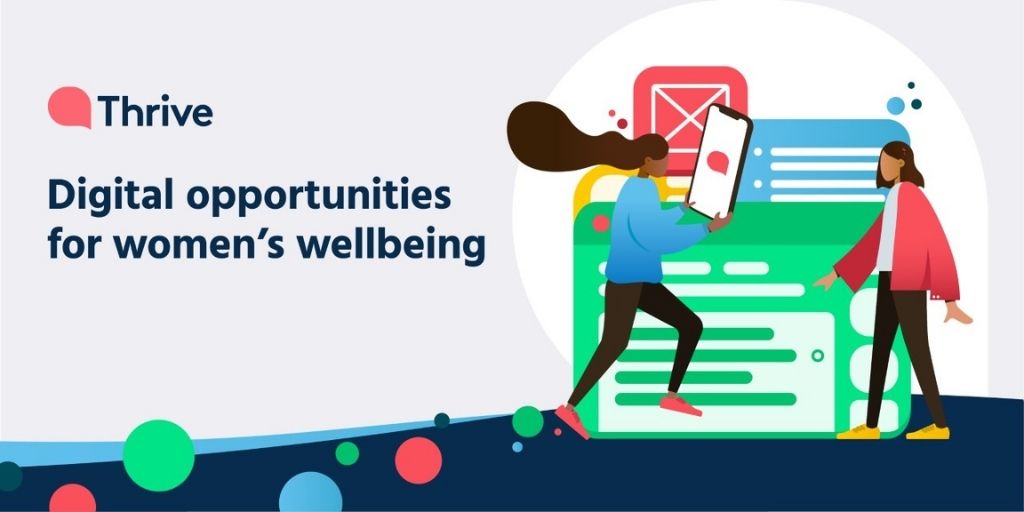
Even in advanced healthcare systems such as the NHS, women’s health has been routinely side-lined and many women’s health issues remain taboo. This is largely due to a lack of female-specific data, which can lead to poor outcomes and tragically, also to unnecessary deaths (BHF, 2021).
But there’s growing awareness of the gender health gap and the need for more adaptive information and care – and digital health has a key role to play.
Digital’s potential to transform women’s health is clear, but is it being realised?
Digital opportunities
Quality digital health solutions can help overcome the female data gap and fragmentation of face-to-face services that has affected women’s health, particularly when it comes to sexual and reproductive health (SRH). Apps such as period and ovulation trackers provide huge amounts of anonymised data, which can help redress the imbalance caused by the historic exclusion of women from clinical trials.
Digital technology can unlock access to services and empower women with information that’s tailored to their individual needs and lifestyles. Women already access health information over 50% more frequently than men (Bidmon & Terlatter, 2015), so there’s a clear opportunity for them to become even better informed about their own health needs.
Digital barriers
Thrive set out to understand the barriers women face when using health tech. We used focus groups and surveys to unpick their ideas and experiences and combined this with a comprehensive review of existing literature.
In this 360-degree overview, we identified several significant barriers to the uptake and effective use of women’s health technology. Some are unique to digital platforms, others represent the digitisation of existing real-world problems:
- lack of trust – 85% of women surveyed said they did not trust online health information
- privacy and anonymity – our focus group participants told us they particularly dislike targeted SRH ads
- poor design
- irrelevance – women’s health content is rarely adapted to age, ethnicity, socio-economic status, or existing health conditions
- dry and unengaging content
- low levels of female-specific general health information – 45% of women surveyed said this was a barrier to improving health
These clear themes enabled us to identify several ways digital health innovators can enhance their offerings.
Authorship and adaptive content
Authorship is important to women. It helps ensure that content is adapted to different needs and contexts, and that it embraces the nuances of lived experience.
Our research shows that evidence-based, adaptive, content from female experts is highly valued. When this is not available on the platforms they use, many women look to social media or other forums where the reliability of information can’t be guaranteed. (Battineni et al, 2020
Expert authorship boosts trust levels – in fact over 90% of Thrive survey participants said it’s vital.
And while expert-led online content can also help rationalise women’s concerns (Huo et al, 2017), hearing other women’s health experiences can reduce health-related anxieties (Bussey & Sillence, 2019). Several focus group participants told us how online research helps them feel more confident when engaging with doctors.
Using authors from a range of backgrounds ensures content is inclusive. This can help break down barriers of access and utility faced by many women, particularly minority groups.
Female-centred design
Women are discerning digital users and trust is important, which they build by assessing the reliability of content, its design, usability, and transparency (Bidmon & Terlatter, 2015). Initial negative experiences can have a long-term impact on trust (Germain et al, 2020). But once it’s built, women often become regular users (Kim, 2016).
Data privacy was also a hot topic in Thrive’s focus groups. Our participants told us that it’s off-putting when digital health companies immediately demand registration and research shows women value digital spaces where they can share experiences in an anonymised manner (Bussey & Sillence, 2019).
Prioritising women’s needs, concerns and behaviours is key to ensuring long-term use. From start to end, platform creators need to keep women’s needs and priorities at the heart of the design process, not tack on features as an afterthought (George et al, 2018).
Femtech, a ready-made solution?
Championed as a revolutionary advance for women’s health, the $19bn femtech sector (Frost & Sullivan, 2019) covers everything from wearables and apps to diagnostics.
But we found that the femtech market has a recognition problem. Few women we spoke to had heard of it and even fewer actively used it – in fact, more women had stopped using femtech than currently use it.
Femtech is an attractive proposition and we found that women are drawn to its potential, but sadly, are not convinced by what they find. In Thrive’s focus groups, participants reviewed two platforms, and many were put off by dry language, poor design and lack of evidence.
Women are clear about what they want: accurate, adaptive and contextualised information that is relevant to their lives. Putting their needs at the front and centre of future platforms will help women’s digital health realise its potential.
For more insights from real women on the barriers they face accessing digital health, check out Thrive’s white paper Digital opportunities for women’s wellbeing.
Author: Sam Doyle









